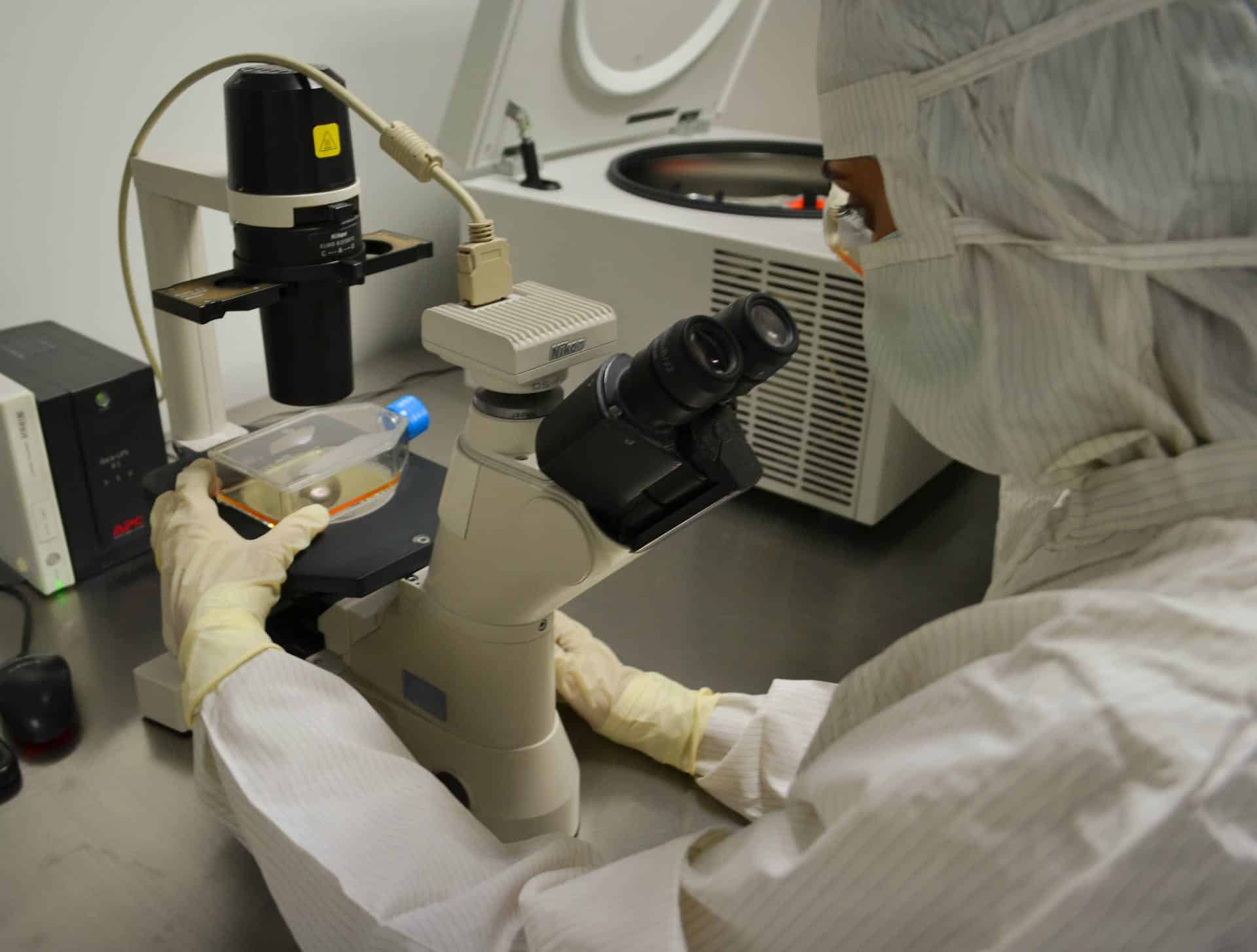In an age where technology is fast evolving, the medical field is no exception. The fascinating development of lab-on-a-chip (LOC) devices has brought about an exciting era in medical diagnostics. These miniaturized medical devices, no larger than credit cards, are designed to carry out all the functions of a full-blown medical lab, right in the palm of your hand. Truly, this is special and transformative technology, making strides in university research labs and high-tech manufacturing. So, what advances are being made in LOC devices for medical diagnostics? Let’s dive in and explore the latest breakthroughs.
Chips for Microfluidic Blood Diagnostics
Microfluidics, the science of manipulating tiny amounts of fluids, and the concept of a lab on a chip are intertwined. This is particularly true when it comes to blood diagnostics. Microfluidic chips are exceedingly proficient in handling and analyzing minute samples of blood, making them an ideal choice for a numerous of diagnostic tests.
Avez-vous vu cela : What advances in hydrogen fuel technology are promoting cleaner energy sources?
In a recent issue of the MDPI journal, researchers from a well-known university shared an exciting progress they made in this area. Their team has developed a chip that can detect minute markers in blood samples, pointing to conditions such as cancer or cardiovascular disease. This microfluidic device has the potential to revolutionize early disease detection, allowing for more timely and effective care.
These microfluidic chips are not only incredibly powerful but easy to use as well. The process is as simple as adding a drop of blood to the chip and waiting for the results. There’s no need for extensive lab equipment or highly trained personnel. The simplicity and efficiency of these chips make them a game-changer in the field of medical diagnostics.
A découvrir également : Check your addresses with a free and effective mail tester
LOC Devices for Rapid Diagnostics
The modern world is all about speed and efficiency, and medical diagnostics are no exception. Waiting for days to get lab results can be nerve-wracking and sometimes can also delay treatment. This is where LOC devices for rapid diagnostics come into play.
These devices are designed to provide real-time, or near real-time, results. At the same time, they maintain the accuracy and reliability that’s expected of traditional lab tests. A special issue of the MDPI journal highlighted a breakthrough development in this area. A team from a prestigious university has developed a LOC device that can accurately diagnose common infectious diseases in less than an hour. This quick turnaround time can drastically improve patient care and outcomes.
The real beauty of these LOC devices is their potential for use in remote or resource-limited settings. Because these devices are compact, portable, and do not require extensive infrastructure, they can be used virtually anywhere. This opens up the potential for improved medical care in regions where access to traditional medical facilities is limited.
Design and Manufacturing of LOC Devices
One of the key challenges in spreading the use of LOC devices is their design and manufacturing. They require high precision and quality control to ensure their functionality and reliability. However, advancements are being made in this area as well.
Recent technological advancements have allowed for the production of LOC devices on a larger scale, with more consistency and at a lower cost. This has been achieved through the use of special manufacturing processes and materials. For instance, some manufacturers are now using polymers instead of silicon, which is easier to work with and less expensive. This makes LOC devices more accessible and affordable for a wider range of applications and users.
At the same time, designers are continually refining the designs of these chips to make them more efficient, user-friendly, and versatile. For example, some of the latest LOC devices can process multiple samples simultaneously, providing a wealth of diagnostic information in a single run.
LOC Devices for Personalized Medicine
The concept of personalized medicine, where treatments are tailored to individual patients based on their unique genetic make-up and health status, is gaining traction. LOC devices can play a significant role in this area.
By analyzing minute samples of blood or other biological fluids, LOC devices can provide detailed insights into a patient’s health status. This information can be used, in turn, to tailor treatments to the specific needs of patients. In other words, LOC devices can help make personalized medicine a reality.
Moreover, some of the latest LOC devices can even analyze genetic material, like DNA or RNA, opening up the potential for genetic diagnostics and personalized gene therapies. This is truly a breakthrough development, heralding a new era in medical diagnostics and treatment.
Advancements in Regulatory and Quality Control for LOC Devices
As with any medical technology, LOC devices have to meet stringent regulatory and quality control standards. While this can be a challenge, advancements are being made in these areas as well.
New protocols and standards are being developed to ensure the safety, efficacy, and reliability of LOC devices. This includes standards for manufacturing, testing, and use of these devices. Moreover, regulatory bodies are working closely with researchers and manufacturers to expedite the approval of LOC devices, without compromising on safety or efficacy.
In addition, new quality control techniques are being adopted to ensure the consistency and performance of these devices. This includes the use of advanced imaging technologies, sophisticated testing methods, and rigorous validation processes. All of these advancements are contributing to the increased acceptance and use of LOC devices in medical diagnostics.
There’s no denying that lab-on-a-chip devices are revolutionizing the field of medical diagnostics. Through their high efficiency, speed, and precision, they hold the promise of better health care for all. As technology continues to evolve, we can certainly expect even more exciting advancements in this field. So, keep an eye on this space, because the future of medical diagnostics is here, and it’s smaller, faster, and smarter than ever before.
LOC Devices in Precision Biodevices Production
Precision biodevices are central to the functioning of LOC devices. With their miniaturized systems, they are a vital part of the product development process. The manufacturing of these tiny but powerful chips is a testament to the advancements in technology and the potential of lab-on-a-chip technology.
Precision biodevices are designed to be highly reliable, providing accurate results consistently. Their design process involves not just a focus on the technological aspects but also the practical applicability of the device. It’s crucial that these devices are user-friendly and accessible to a broad range of users, including those without professional clinical lab training.
The open access availability of these devices is another important aspect of their product development. Open access means that the devices can be used by a broad range of users, from researchers in a university lab to health professionals in a remote area. Open access to these devices could significantly enhance point-of-care diagnostics, making it possible for patients to receive accurate, timely diagnostics no matter where they are.
Companies like Vantiva Precision are at the forefront of this exciting field. They are constantly refining and improving their microfluidic device manufacturing techniques to produce better, more efficient LOC devices. With the advancements in LOC technology, the annual scientific meeting of the AACC (American Association for Clinical Chemistry) always has a significant section dedicated to these miniaturized labs.
Future Prospects of LOC Devices in Medical Diagnostics
The future of LOC devices appears to hold boundless potential. With each passing year, new breakthroughs are announced at the annual scientific meeting of the AACC, turning the previously unthinkable into reality.
One exciting prospect is the integration of LOC technology into standard clinical care. Imagine a world where every health clinic, no matter how remote, has access to a lab-on-a-chip device. Patients wouldn’t need to travel miles for lab tests or wait days for results. This would revolutionize healthcare delivery, particularly in resource-limited settings.
Another potential future development is the use of LOC devices in genetic testing. As our understanding of the human genome advances, so too does the potential for personalized medicine. By using LOC devices to analyze a patient’s genetic material, healthcare providers could tailor treatments to the individual’s unique genetic profile, potentially improving effectiveness and reducing side-effects.
The growth of the LOC devices market is also a clear indication of their future potential. According to the latest reports, the global lab-on-a-chip market is expected to grow at a CAGR of around 10% during 2020-2027. This growth is driven by the increasing prevalence of diseases, the rising demand for point-of-care testing, and the advancements in chip technology.
Conclusion
The advancements in lab-on-a-chip devices are indeed reshaping medical diagnostics. From their role in precision biodevices production to their potential future applications, LOC devices are paving the way for a new chapter in healthcare.
These miniaturized labs are not just a scientific breakthrough; they are a means to democratize healthcare, bringing high-quality, timely diagnostic care to all who need it. The continued research and development in this area are indicative of an exciting future, where medical diagnostics is not limited by location, resources, or time.
So, whether you’re a researcher, a health professional, or a patient, it’s worth keeping an eye on the developments in LOC devices. They are not just a part of the future of medical diagnostics; they are the future.






